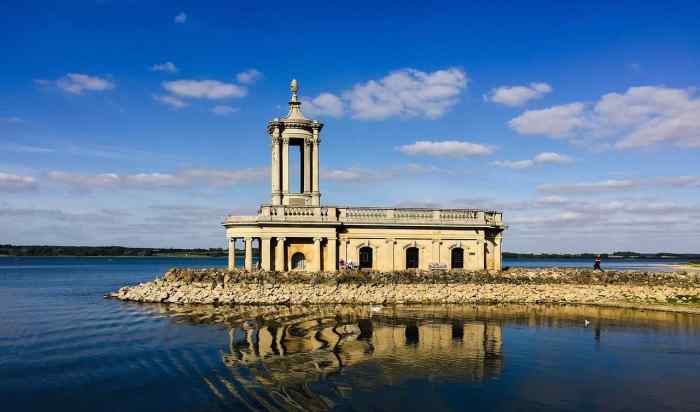Many people in the UK think the ceremonial county of Rutland in the East Midlands region of England does not exist, thanks to its disappearance between 1974 and 1997. But local identity and valued heritage brought it back to life.
For those who are in the know, Rutland is famous for its independent schools Oakham and Uppingham, and for England’s largest man-made lake at Rutland Water Nature Reserve, which is both a reservoir and home to many species of fish, animals and birds including Ospreys.
Local History on Facebook
Local history Facebook pages and groups are a useful way for people to share their old photos, videos and memories. The local history of Rutland on Facebook includes:
- Leicestershire & Rutland Family History Society
- Oakham Castle
Local History Resources
In addition to the national resources for UK local history, many of which include information about Rutland in their archives, the following societies and organisations focus on the history of Rutland’s past people and places:
- Eastmidlandshistory.org.uk
- Friends of Rutland County Museum & Oakham Castle
- Leicestershire & Rutland Family History Society
- Lyddington Bede House
- Normanton Church Museum
- Oakham Castle
- Rocks by Rail
- Rutland County Museum
- Rutland Libraries
- Rutland Local History and Record Society
Cities, Towns and Villages in Rutland
There are no cities in Rutland, and the county is home to only two towns – the county town of Oakham, and Uppingham. However, England’s smallest county does contain many villages and hamlets:
- Ashwell
- Ayston
- Barleythorpe
- Barrow
- Barrowden
- Beaumont Chase
- Belmesthorpe
- Belton-in-Rutland
- Bisbrooke
- Braunston-in-Rutland
- Brooke
- Burley
- Caldecott
- Clipsham
- Cottesmore
- Edith Weston
- Egleton
- Empingham
- Essendine
- Exton
- Glaston
- Great Casterton
- Greetham
- Gunthorpe
- Hambleton
- Horn
- Ketton
- Langham
- Leighfield
- Little Casterton
- Lyddington
- Lyndon
- Manton
- Market Overton
- Martinsthorpe
- Morcott
- Normanton
- North Luffenham
- Oakham
- Pickworth
- Pilton
- Preston
- Ridlington
- Ryhall
- Seaton
- South Luffenham
- Stoke Dry
- Stretton
- Teigh
- Thistleton
- Thorpe by Water
- Tickencote
- Tinwell
- Tixover
- Uppingham
- Wardley
- Whissendine
- Whitwell
- Wing
Rutland was absorbed into Leicestershire in 1974, but reinstated as a ceremonial county with its own county council in 1997, with the Royal Mail recreating the postal county in 2008. Because of the small population, the Parliamentary seat and emergency services are provided in collaboration with other areas.
Rutland is the smallest county in England, with the borders – at their furthest points – being 18 miles (29 kilometres) apart north to south and 17 miles (27 kilometres) apart eat to west. Not surprisingly, the population is also small – in 2014 the entire county was home to just 38,000 people.
Young people typically move away from the county, thanks in part to the average house price being an unaffordable nine times the medium local income. According to the BBC, which in 2019 reported on the threat to Rutland’s status as the only county in England not to have a McDonald’s, 28% of the county’s population is aged over 60 and there are far fewer 20 to 24-year-olds than 15 to 19-year-olds.
How Rutland got its name is unknown, though it emerged from the Anglo-Saxons and was retained by the Normans. “Roteland”, was bequeathed by Edward the Confessor to his wife in AD1060 and King William the Conqueror’s Domesday book (AD1085/1086) refers to various different parts of the county as “the King’s soc of Roteland”, “Rutland”, and “wapentake of Wicelsea”.
Back to Local History Videos Home page.
Thanks to steveshead for use of the image shown at the top of this page.

